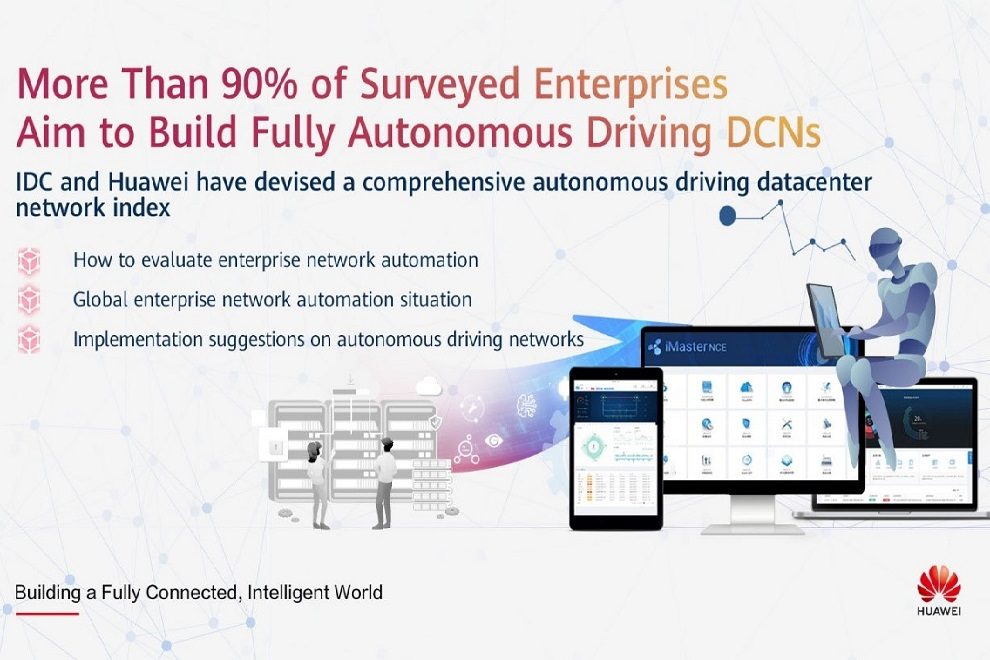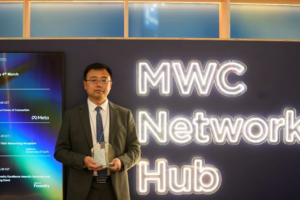According to IDC’s latest whitepaper Leveraging the Autonomous Driving Datacenter Network Index sponsored by Huawei, over 90% of enterprises claim that they pursue fully autonomous networks for service agility, flexibility, and cost-effectiveness. As highlighted in the report, the autonomous driving data center network helps enterprises reconstruct the network architecture and operation mode and enhance service resilience and continuity. The report also provides suggestions on how enterprises can promote and gradually achieve comprehensive automation, regardless of their current DCN automation levels.
To understand the automation level, challenges, and opportunities of enterprise data center networks, Huawei commissioned IDC to survey the current status of data center networks of 205 enterprises in different industries. The survey explored different network scales, defined the levels of data center network automation, and explored the feasible ways to implement full automation.
IDC asked respondents to identify what was driving their need for data center network automation. At the top of the list was application and business continuity and resilience (between data centers/clouds), which was cited by about 45% of respondents. IDC believes this result was accentuated by the COVID-19 pandemic, which has caused organizations to prioritize business resilience and continuity as they focus on keeping the digital lights on during an unforeseen crisis.
According to the survey results, about 48% said they used automated management tools such as Ansible, Puppet, Chef, Salt, and Terraform. Meanwhile, 19% indicated using command lines/SNMP. Only 6.3% of respondents claimed to be using a closed-loop intent-based network, an autonomous driving network, or another self-driving network.
However, from the industry perspective, all surveyed industry customers are performing data center network automation or have plans to do so. Only 40% of government customers have deployed or are deploying data center network automation, which lags behind other industries. In terms of scale, enterprises with three or more data centers will go further on the road to network automation. According to the survey, 72.5% of the respondents said that they have deployed or are deploying network automation.
IDC asked respondents whether a fully autonomous (driving) datacenter network was a goal for their organizations. Nearly 91% indicated that it is a goal in more than two years, and 9.3% of respondents indicated they had no plans for a fully autonomous datacenter network.
To help enterprises determine the automation phase and achieve full network automation, IDC and Huawei devised the data center network index. Through five automation levels, this index covers each phase from non-automation to full automation. The index also provides a measurement standard for the data center network autonomous driving level based on the network lifecycle requirements. (For more details about the measurement standard, see the full report).
Leon Wang, President of Huawei Data Center Network Domain, said, “We highly appreciate the survey and research of IDC. The release of the data center network index is very important and points out the direction for the development of the entire industry. Although data center networks of different enterprises have different autonomous driving levels, customers in various industries are actively embracing automation to achieve service agility and reliability while reducing OPEX and CAPEX. Huawei will continue to invest in technologies, applications, and ecosystems, continuously improve the data center network autonomous driving level, and maintain its leadership position. Huawei will help enterprises build autonomous network systems and accelerate digital transformation.”
Separately, Huawei announced its 5G RAN gNodeB and LTE eNodeB has passed 3GPP’s Security Assurance Specifications (SCAS) testing. It was performed by DEKRA, the first security test laboratory in Europe accredited for SCAS testing. The report has been released on the GSMA website. After passing GSMA’s Network Equipment Security Assurance Scheme (NESAS) audit, and 3GPP’s SCAS testing, Huawei becomes the first 5G and LTE vendor to pass the GSMA’s NESAS evaluation officially.
Additionally, MTS, the largest mobile network operator in Russia, and Huawei jointly implemented the world’s first commercial use of Smart 8T8R in Moscow recently. The operator’s 4T4R networks were upgraded to 8T8R in the city’s hotspots, increasing capacity by 1.9 times and improving user experience by 2.1 times. Such a performance boost greatly relieves the capacity pressure on the networks while ensuring a high-quality service experience. The success of this deployment reflects the strong innovation capabilities of both Huawei and MTS and is an important part of MTS’s strategy to build high-quality 5G-ready 4G networks.












